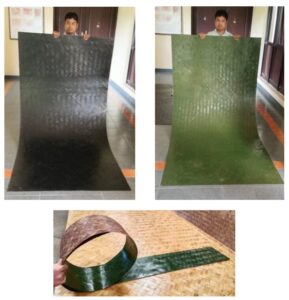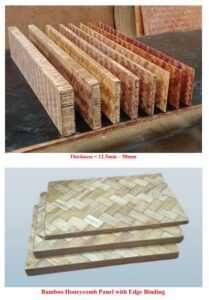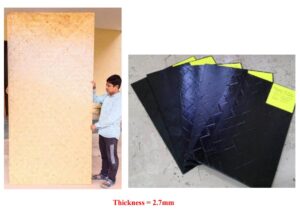In our fast-paced, technology-driven world, stress, anxiety, and physical fatigue have become common struggles. Many people are seeking natural ways to restore balance and improve overall well-being. One such powerful yet underrated practice is Bamboo Forest Therapy. Inspired by the Japanese concept of ‘Shinrin-yoku’ or forest bathing, Bamboo Forest Therapy offers a unique way to reconnect with nature and rejuvenate the mind and body.
1. What is Bamboo Forest Therapy?
Bamboo Forest Therapy is a holistic wellness practice that involves immersing oneself in a bamboo forest to experience its therapeutic benefits. It is a mindful activity where individuals slow down, breathe deeply, and absorb the natural healing energy of the bamboo groves. Unlike hiking or exercising, the focus is on mindfulness, relaxation, and sensory awareness rather than physical exertion.
2. The Unique Healing Properties of Bamboo Forests
Bamboo forests offer a distinctive environment that promotes mental, emotional, and physical well-being. Here’s why:
Serene Atmosphere: The towering green bamboo stalks create a peaceful, enclosed space that fosters a sense of security and calmness.
Soothing Sounds: The gentle rustling of bamboo leaves in the wind has a meditative quality that helps reduce stress and anxiety.
Purified Air: Bamboo plants release oxygen and absorb pollutants, creating cleaner, fresher air that benefits respiratory health.
Natural Aromatherapy: The subtle scent of bamboo has calming effects on the nervous system, promoting relaxation and mental clarity.
3. Mental Health Benefits of Bamboo Forest Therapy
Spending time in a bamboo forest provides profound psychological benefits, including:
Stress Reduction: Studies show that being in nature lowers cortisol levels, the stress hormone, leading to a calmer state of mind.
Anxiety & Depression Relief: The tranquil surroundings and fresh air can help alleviate symptoms of anxiety and depression.
Improved Focus & Creativity: A break from digital screens and urban chaos enhances cognitive function and creativity.
Enhanced Mindfulness: Bamboo Forest Therapy encourages slow, intentional movement and deep breathing, helping individuals become more present and aware.
4. Physical Health Benefits of Bamboo Forest Therapy
Beyond mental relaxation, immersing oneself in a bamboo forest also contributes to physical well-being:
Boosted Immune System: Exposure to phytoncides, natural compounds released by bamboo, strengthens immunity and reduces inflammation.
Lower Blood Pressure & Heart Rate: Studies indicate that time spent in green spaces significantly lowers blood pressure and promotes cardiovascular health.
Better Sleep Quality: Natural light exposure and fresh air regulate melatonin production, leading to improved sleep patterns.
Increased Energy Levels: Walking through a bamboo forest replenishes energy by reducing fatigue and enhancing oxygen circulation.
5. How to Experience Bamboo Forest Therapy
Practicing Bamboo Forest Therapy is simple and does not require special equipment. Follow these steps for an immersive experience:
Find a Bamboo Forest: Look for nearby bamboo groves, botanical gardens, or nature reserves with bamboo plantations.
Unplug from Technology: Leave behind distractions like phones and headphones to fully engage with the natural environment.
Walk Slowly & Mindfully: Move at a gentle pace, focusing on each step, the ground beneath your feet, and the swaying bamboo.
Engage Your Senses: Notice the colors, sounds, and scents around you. Touch the smooth bamboo stalks and breathe in deeply.
Practice Deep Breathing: Inhale the fresh air deeply and exhale slowly to promote relaxation and reduce tension.
Sit & Meditate: Find a quiet spot to sit, close your eyes, and absorb the peaceful energy of the bamboo forest.
6. Famous Bamboo Forests for Healing & Exploration
If you’re looking for breathtaking bamboo forests to experience this therapy, consider visiting:
Arashiyama Bamboo Grove (Japan): One of the most famous and picturesque bamboo forests in the world.
Sagano Bamboo Forest (Japan): A UNESCO-recognized healing forest known for its mesmerizing green corridors.
Mawphlang Sacred Forest (India): A mystical bamboo-rich forest in Meghalaya, known for its spiritual and healing energies.
Anji Bamboo Forest (China): Home to thousands of acres of lush bamboo, featured in the movie ‘Crouching Tiger, Hidden Dragon.’
7. Incorporating Bamboo Forest Therapy into Daily Life
Even if you don’t have access to a bamboo forest, you can still incorporate elements of Bamboo Forest Therapy into your daily routine:
Grow bamboo plants at home or in your garden to create a mini oasis.
Listen to bamboo rustling sounds or nature recordings for relaxation.
Use bamboo-based decor or meditation accessories to bring nature indoors.
Engage in mindful breathing and meditation while visualizing a bamboo forest.
Conclusion
Bamboo Forest Therapy is a natural and powerful way to heal both the mind and body. Whether you seek stress relief, improved mental clarity, or enhanced physical health, spending time in a bamboo forest can provide profound benefits. By incorporating this practice into your lifestyle, you can cultivate a deeper connection with nature and experience lasting well-being. So take a step into a bamboo forest, breathe deeply, and let nature work its magic!





